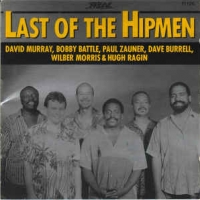So, where do we stand on EQ?
I used to be totally anti, but while looking into designing some OB loudspeakers, the prospect of having to use some EQ loomed.
I was originally going to borrow a processor box, but @RobHolt posted about Digital EQ on OS X over at the Audiosmile Forum. I decided to have a play on my system as it stands.
I'm amazed how Audio Hijack Pro and the Mac's native plug-ins make no negative impact on the performance of even my main rig. Taking a bit of advice, and doing a little bit of playing, I have five points of Parametric EQ in place. They're deliberately subtle, and sometimes cannot even be heard - it seems to depend on the characteristics of the recording.
But the end point is a clearer, cleaner sound, with a bit more bass presence.
At the moment, I'm sold. This is great. AHP is a great 20-quid's worth.
Where do you stand?

Comments
Wouldn't all systems and rooms deviate from a flat frequency response to some extent? EQ would be the obvious way to sort this out, either by ear or measurement, depending on preference.
I suppose the issues are what other, inadvertent effects the EQ circuitry imposes on the sound, and whether these outweigh the benefits of a flat frequency response.
I do think there's more than psychology / superstition to the 'purity of the signal path', but I also suspect it's generated something of an overblown phobia, that may cause the throwing out of several babies with the bath water. It's certainly one from which I suffer.
Perhaps digital EQ removes some of the speculated downsides.
my personal belief is that if you have a properly high end system in an ideal room EQ would possibly be a bad thing , how many of us have that though?
i say EQ to your hearts content ,if,it brings you greater enjoyment of the music , after all its what this hi fi thing is all about , i am currently using a series inductor on my usher s520's 0.4mh to give the whole response a wee tilt towards the warmer end of things , its made listening to messy mp3's a lot more palatable and a hell of a lot cheaper than building a new system.
all the best,
matt
That the good ol' RIAA correction sneaks under the radar.
I suppose it can be precisely calculated and standardised as a "correction", but it's a huge EQ nevertheless.
Do you set this box of tricks up with microphone measurements in your listening spot? Otherwise how will you know what settings to employ?
I have been wrong/surprised enough times over the last year or two to believe this might be worth a try (spit...)
Also, does it output into Audirvana or Decibel for playback? Or does the player come before the processing?
Just, like askin, man'.
I have always been happy (so far) to live with a room if it isnt too offensive.
But... A couple of evenings' fiddling has reduced the speakers' presence in the sound and that makes a difference over longer listening sessions, I feel.
I agree James, a mic seems to make sense to mee too. Aren't there any suitable ones second hand?
Maybe @RobHolt ; can recommend a specific microphone. Rob?
I'll cover that off at the weekend.
Looking forward to reading your next piece.
Look forward to your update Rob and thanks for the mic recommendation.
One of the areas where real gains can be made.
Keith.
What's this about Genelecs, Keith?
KR Keith.
extremely similar to the horns, bass is slightly different character and the scale of the Genelecs is a little smaller.
I was extremely impressed, getting a pair for my 'studio' ( upstairs bedroom) and a tiny pair plus sub for the office.
KR Keith.
But the Gens are extremely rich, double bass sounds like a double bass, part of the appeal is that the Gens are the dialectic opposite to the horns .
Active vs passive, digital filtering vs traditional crossover , aluminium extruded case etc.
KR Keith.
Kind regards
Keith.
KR Keith.